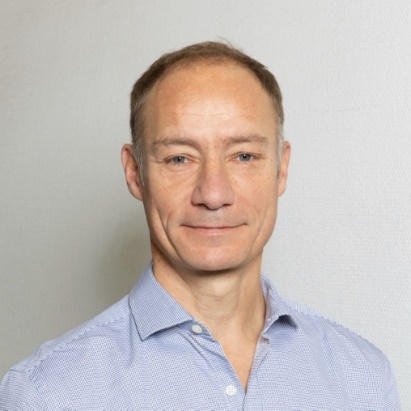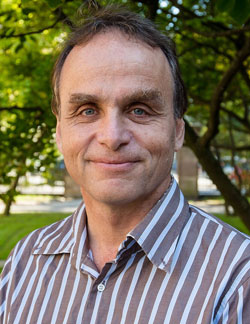
搜索网站、位置和人员

新闻与活动 活动信息
交叉科学中心系列讲座CIS Seminar | Pierre Sens & Kim Sneppen: Cell adhesion, motility and morphogenesis
时间
2024年11月11日(星期一)
下午16:00-17:30
地点
云谷校区E10-211
主持
西湖大学交叉科学中心讲席教授汤雷翰
受众
全体师生
分类
学术与研究
交叉科学中心系列讲座CIS Seminar | Pierre Sens & Kim Sneppen: Cell adhesion, motility and morphogenesis
时间:2024年11月11日(星期一)下午16:00-17:30
Time: 16:00-17:30, Monday, Nov 11, 2024
主持人: 西湖大学交叉科学中心讲席教授汤雷翰
Host: Dr. Leihan Tang, Deputy Director & Chair Professor of the Center for Interdisciplinary Studies (CIS)
地点: 云谷校区E10-211
Venue: E10-211, Yungu Campus, Westlake University
讲座语言:英文
Lecture Language: English
Speaker:

Pierre Sens
CNRS and Institut Curie, France

Kim Sneppen
Niels Bohr Institute (NBI), University of Copenhagen
Lecture 1:
Title: Symmetry breaking in active gelsand models of crawling cell motility
Biography:
Pierre Sens is research director at CNRS and group leader at Institut Curie, in Paris. Pierre received his PhD from the University of Strasbourg (France) in 1996 in the field of soft condensed matter and complex fluids. He then was a postdoc at U.C. Santa Barbara (Material Research Lab) for a couple of years, then at Institut Weizmann (Dept. of surfaces and interfaces) in Israel for a year, before coming back to France with the CNRS. Dr. Sens is a theoretical physicist applying physical concepts to the study of biological systems, in particular to living cells. He investigates the active mechanics of cells, with a focus on cell motility and mechano-sensation and tissue mechanics. Pierre also studies cellular membranes, particularly membrane shaping by proteins and the cytoskeleton and the dynamics on intracellular membranes and the generation and maintenance of cellular organelles. More recently Dr. Sens has also worked on osmotic effects in cellular systems to establish the physical basis of cellular homeostasis such as cell volume and density regulation.
Abstract:
Cell crawling is ubiquitous in many biological processes from development to cancer. It is inherently a problem of mechanics, in which forces actively generated by the cell through consumption of chemical energy are transmitted to the environment through transient adhesion to allow for cell translocation. Spreading and crawling cells display rich non-linear dynamics reminiscent of excitable systems. These include periodic phases of growth and retraction of cellular protrusion, travelling waves along the cell edges, and spontaneous cell polarisation and crawling. I will illustrate the fundamental role of mechanics in regulating cell motility through two examples.
- I will first discuss a theoretical model combining the stochasticity of cell-substrate adhesion and linear cell viscoelastic mechanics. I will show that the force-sensitive unbinding of adhesion bonds leads to a stick-slip dynamics that recapitulates many of the remarkable dynamical features of crawling cells.
- I will then discuss then discuss a model of cell motility based on spontaneous symmetry breaking in a contractile active gel and discuss how the interplay between the dynamics of the cell and the mechanical response of the extracellular medium affects cellular crawling motion in viscoelastic environment.
Lecture 2:
Title: Random baby model of morphological diversity
Biography:
Kim Sneppen obtained his Ph.D. from the University of Copenhagen in 1989 and subsequently conducted research at Nordita (Nordic Institute for Theoretical Physics), Rockefeller University, Princeton University, the Weizmann Institute of Science, and the Niels Bohr Institute (NBI). In 1995, he was awarded the Ole Rømer Prize by the Royal Danish Academy of Sciences and Letters. Since 2005, he has served as a professor at NBI and is also a member of the Royal Danish Academy of Sciences and Letters. His research spans multiple disciplines, including physics, biology, and statistical mechanics, with a focus on complex systems, self-organization phenomena, and network dynamics.
Abstract:
We suggest a rule-based approach to modelling development of organs and body plans of animals. We subdivide the problem into gene regulated cell differentiation, cell-cell signaling, and the physical dynamics of interacting cells that shapes organs and bodies. In this talk I will focus on the latter, starting with the overall phenomenology of our bodies as a collection of sheets that forms hollow spheres, tubes and branching tubes. The physics of these two symmetry breaking events is governed by two types of cell-cell interactions, the Apical-Basal polarity (AB) that direct sheet formation, and Planar Cell Polarity (PCP) that direct tube formation. I describe a working dynamical model that deals with these two polarities. The model is applied to the biological process of gastrulation, of neural tube formation, and to mimic the dynamics of branching tubes seen in the growth of lungs or kidneys.
Contact:
Center for Interdisciplinary Studies (CIS), Zilin ZHU, Email: zhuzilin@westlake.edu.cn

















